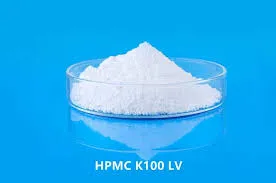
Okt . 21, 2024 16:37 Back to list
Uses and Benefits of Redispersible Polymer Powders in Various Industries
Applications of Redispersible Polymer Powder An Overview
Redispersible polymer powder (RDP) has gained significant attention in various industries due to its versatility and performance-enhancing properties. This powdered form of polymer, which can be easily redispersed in water, finds applications in construction, coatings, adhesives, and many other fields. Understanding the diverse applications of RDP is essential for industries seeking innovative solutions to improve product performance and sustainability.
One of the primary applications of redispersible polymer powder is in the construction industry. RDP is often used as a key ingredient in tile adhesives, skim coats, and exterior insulation and finish systems (EIFS). By incorporating RDP, these products exhibit improved flexibility, adhesion, and water resistance. This is particularly important in environments that experience significant temperature fluctuations or moisture exposure. The enhanced performance of construction materials not only leads to longer-lasting applications but also reduces maintenance costs over time.
In addition to construction, RDP plays a crucial role in manufacturing high-performance coatings. These coatings are widely used in both industrial and architectural applications due to their excellent adhesion, durability, and weather resistance. The incorporation of RDP allows for the formulation of low-VOC (volatile organic compound) coatings, which are increasingly in demand due to environmental regulations and consumer preferences for eco-friendly products. Furthermore, RDP can enhance the texture and gloss of coatings, making them visually appealing while maintaining functional advantages.
Another notable application of redispersible polymer powder is in the production of adhesives. RDP is commonly utilized in the formulation of various adhesive systems, including those used in wood, paper, and construction materials. The unique properties of RDP provide improved bonding strength and flexibility, which are crucial for applications requiring strong adhesion under dynamic conditions. Moreover, the redispersible nature of the powder allows manufacturers to create adhesive formulations that can be easily customized to meet specific performance requirements.
applications of redispersible polymer powder

The automotive and aerospace industries have also shown interest in RDP, particularly for lightweight composite materials. The addition of redispersible polymer powder can improve the mechanical properties and thermal stability of composite systems. This can lead to weight reductions in vehicles and aircraft, enhancing fuel efficiency and overall performance. Additionally, RDP can help in the formulation of coatings that provide corrosion resistance, a critical aspect for components exposed to harsh environments.
In the realm of textiles, RDP is gaining popularity for its role in improving the performance of fabrics. It is used in textile coatings and finishes to impart water-repellency, durability, and elasticity. These enhanced properties make textiles more resilient to wear and tear, thereby extending their lifespan and usability. Furthermore, RDP can be employed in the production of nonwovens, which are increasingly utilized in the hygiene, medical, and automotive sectors.
The use of redispersible polymer powder is not limited to traditional applications; it is also finding its way into innovative fields. For example, RDP can be utilized in 3D printing applications, where it enhances the adhesion and cohesiveness of printed materials. As additive manufacturing continues to evolve, the role of RDP in achieving high-quality printed objects is likely to expand.
In conclusion, redispersible polymer powder is a versatile material with a broad range of applications across various industries. Its ability to enhance the performance and sustainability of products makes it an invaluable ingredient in construction, coatings, adhesives, textiles, and even advanced manufacturing techniques like 3D printing. As industries strive for improved functionality and eco-friendliness, the demand for RDP is expected to grow, driving further innovation and exploration of its potential applications. With ongoing research and development, it is likely that new uses for this remarkable material will continue to emerge, solidifying its position as an essential component in modern manufacturing processes.
-
Versatile Hpmc Uses in Different Industries
NewsJun.19,2025
-
Redispersible Powder's Role in Enhancing Durability of Construction Products
NewsJun.19,2025
-
Hydroxyethyl Cellulose Applications Driving Green Industrial Processes
NewsJun.19,2025
-
Exploring Different Redispersible Polymer Powder
NewsJun.19,2025
-
Choosing the Right Mortar Bonding Agent
NewsJun.19,2025
-
Applications and Significance of China Hpmc in Modern Industries
NewsJun.19,2025







